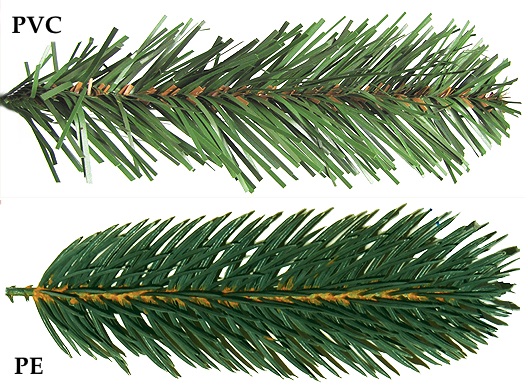Part 1 – Health Impacts
This post is going live on the first Sunday of Advent, the four Sundays that lead up to Christmas. Advent usually starts the weekend after Thanksgiving, which is also when many people (myself included) start bringing Christmas decorations out of storage. For many families across the country (whether or not they actually celebrate Christmas), the central piece of seasonal decorations is the Christmas tree. Unfortunately a variety of factors this year are making Christmas trees – both real and artificial – harder to come by.
Complicating Factors for Consumers
Extreme weather, including droughts and wildfires, has taken its toll on many tree farms in the northwest. Christmas trees take about six to ten years to grow to size, meaning that any damage from this year’s wildfires will affect supply for close to the next decade. Reduced supply (and therefore higher prices) may drive consumers to buy plastic trees instead, but most artificial trees are manufactured in China, and supply chain backups are reducing availability there too.[1]
Americans buy around 50 million real and plastic Christmas trees ever year, and this year we can expect prices of both to rise around 10-30%.[2] Rising prices often beg the question of whether something is worth the money. And with the price points as close as they are for real ($81 on average in 2020) and artificial ($104 on average in 2019) trees, it would seem to make good financial sense to buy an artificial tree and reuse it for years to come.[3] However, there are plenty of other factors to take into account, aside from the price point.

When I first moved in with Christian, one of our first disagreements was over the Christmas tree. He owned an artificial tree (which he had acquired second-hand), but I have always preferred real trees for multiple reasons. First and foremost, ancient Egyptians, early Romans, and Druids alike brought greens inside during winter to represent life’s triumph over death and the return of light.[4] Suffering from seasonal depression as I do, I need the joy that a live tree brings. I do not get the same emotional boost from something made of plastic.
Objections to Plastic Trees
Indeed, the more I have learned about the plastic industry in recent years, the more I have avoided anything made from plastic whenever possible. The vast majority of artificial Christmas trees are manufactured in China and are made from polyvinyl chloride (PVC). PVC can off-gas volatile organic compounds (VOCs) that can irritate the eyes, nose, and lungs. It can also contain phthalates, which can disrupt hormone functions in the body. California even requires PVC Christmas trees to carry a warning label about the risk of lead.[5]
Physicians familiar with VOC impacts on human physiology recommend letting new artificial trees sit outside for several hours or days in order to air out; they also recommend keeping artificial trees for no longer than nine years because the PVC will also off-gas VOCs once it starts to degrade.[6] Some artificial tree companies have started to use polyethylene instead, which is considered safer, as it isn’t known to leach harmful chemicals,[7] but many still use flame-retardants, which also include hormone disrupting chemicals. Regardless, children should not be allowed to touch or chew on branches, and pregnant people should not handle the tree. Everyone should always wash their hands after handling an artificial tree (and Christmas lights, apparently).[8],[9]

Even with ostensibly safer options in the home, the plastics industry on the whole is rife with the potential for harm. Those living near petrochemical facilities, which make plastics from oil and gas, have increased risks of negative health outcomes including “acute adverse health effects, shortness of breath, eye irritation, dizziness, cough, nose congestion, sore throat, phlegm and weakness from exposure to industrial air pollutants,”[11] as well as higher incidence of cancer.[12]
Although I know Christmas trees aren’t made with plastic from Louisiana’s “Cancer Alley,”[13] but rather from plastic manufacturing facilities in China, I know I would have a harder time enjoying a tree (the ancient symbol of life returning to the world) when thinking of the pollution resulting from its production. Having learned more about adverse health outcomes related to plastic manufacturing over the past two years – as we in southwest Pennsylvania count down to our own regional shale gas-fueled plastics plant opening in 2022 – I am doing anything I can to reduce any financial support of the industry.
Objections to Real Trees
After voicing concerns about plastic trees and the plastics industry as a whole, I am finding it hard to counter with arguments anywhere near as substantial for real trees. The worst health-related objections I could find were from the American Christmas Tree Association (a trade association for artificial tree manufacturers), saying that real trees can contain allergens, such as mold that can increase hay fever symptoms.[14] Aside from that, several sources pointed out the risk of pesticides on the tree (if it doesn’t come from an organic farm), and that real trees pose a greater fire hazard than artificial ones, especially if not cared for properly.[15]

More common arguments involving real trees are not related to health, but rather convenience, expense, and ethics. Convenience and expense concerns reflect the fact that for real trees, you need to go out and buy a new one each year, water it, clean up after it, and dispose of it. All of that takes time, energy, and money – more than one would expend on an artificial tree. The ethics question comes down to whether it is right to kill a tree and disturb any wildlife that might be living in it.
I have danced around ethics questions on this blog in the past, knowing that I can only speak to my own priorities and values, and that I cannot dictate them for others. But how I weigh ethics in this very complex equation includes environmental and economic impacts, as well as the health impacts I laid out above. And environmental impacts are where we will pick up next week, with a life cycle analysis of each option.
~
Have you noticed any price increases this year if you’ve been tree shopping yet? Have prices or availability changed your mind about what you usually buy? Go ahead and share your story in the comments below.
Thanks for reading!
[1] https://www.wesa.fm/2021-11-04/why-christmas-trees-may-be-harder-to-find-this-year-and-what-you-can-do-about-it
[2] https://www.sacbee.com/news/local/environment/article256000297.html
[3] https://www.consumerreports.org/shopping-retail/best-time-to-buy-a-christmas-tree-a6190683503/
[4] https://www.history.com/topics/christmas/history-of-christmas-trees
[5] https://www.p65warnings.ca.gov/fact-sheets/lead-and-lead-compounds
[6] https://www.ahchealthenews.com/2015/12/18/could-your-artificial-christmas-tree-be-hazardous/
[7] https://www.menshealth.com/health/a19548208/do-christmas-trees-make-you-sick/
[8] https://www.greenchildmagazine.com/6-tips-for-safe-holiday-decorating/
[9] https://www.becausehealth.org/artificial-christmas-trees-2641518147.html
[10] https://premiumpatio.com/needles-and-realism-artificial-christmas-trees/
[11] https://pubmed.ncbi.nlm.nih.gov/24851575/
[12] https://www.sciencedirect.com/science/article/pii/S1438463917302912
[13] https://www.theguardian.com/us-news/2020/jan/07/louisiana-formosa-plastics-facility-air-quality-permits-cancer-alley
[14] https://www.christmastreeassociation.org/allergic-to-the-holidays/
[15] https://realchristmastrees.org/all-about-trees/care-tips/
[16] https://getyarn.io/yarn-clip/dbf284a6-9a26-4c75-b8eb-a034de008ec4
0 Comments